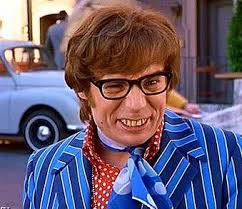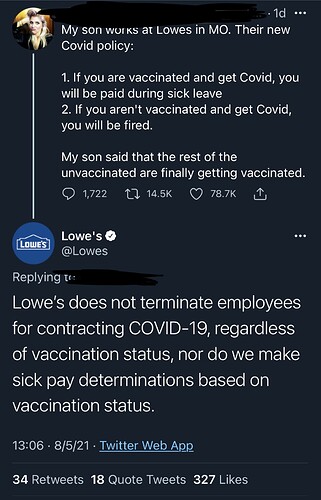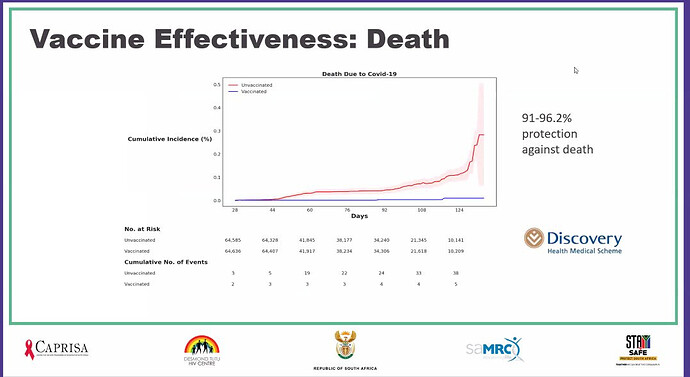Looks like the Lowes policy thing was bullshit, which makes sense because it was a super dumb policy
Where did you get that?
Chris is a good guy. I gambled with him a ton on sports in hsnl on our old home. We need to get him over here.
I think this is a great idea if you think there’s any likelihood you could pull it off.
Raise
I don’t know how many people subscribe to Your Local Epidemiologist, but it’s a good (and brief) newsletter. Today’s was especially good, I thought. Key points:
- We seem to be getting closer to a good estimate of the effectiveness of mRNA vaccines against Delta. Originally, we had a range of like 88% from the UK down to 39% from Israel. But a recent study from the UK shows that something in between is most likely:
vaccinated people had a 59% reduced risk of getting symptomatic COVID19 compared to unvaccinated.
- Viral load can be the same among the vaccinated vs. unvaccinated**, BUT this is only the case in the first 6 days. There’s a faster decline among the vaccinated, so that
Vaccinated seem to not be infectious after 9 days (Ct=30) compared to unvaccinated at 16 days.
**The thing that is frustrating about this point is that people are interpreting it as evidence that the vaccine doesn’t work against Delta. p(high viral load|vaccinated and infected) is NOT the same as p(high viral load|vaccinated), which is a point that not enough people are making imo.
Anyway, the newsletter is a good follow.
Ah, that is an important distinction. It’s still the sort of protection we’d all be very thankful for if that were the first or only shot available.
I believe none of these account for a background of higher natural immunity due to prior infection. That’s going to lower the infection rate in the unvaccinated group which will make the vaccines appear less effective.
(So they control vs today’s unvaxxed population which is different than the last years control which was used in the original studies).
Yeah, hard to say how big a factor that is, though.

I can’t find it but iirc something an example of about 10-20% in raw numbers. So if last year was 90%, then the same vaccine effectiveness would drop to 80 or a little less.
I have no idea what the fraction of unvaxxed that tests antibody positive.
What does it mean to say “the single-shot J&J vaccine offered 91% to 96.2% protection against death”?
I thought even unvaccinated people have only around a 2% chance of dying if they get Covid. That would seem like the baseline (no vax) would be a 98% “protection against death” so I’m confused but I’m sure I’m misunderstanding something.
Lol, that evidence is umm, not great for his lawsuit.
The denominator is the number of people in the study who died, not the total number of people in the study.
This is only true if the vaccinated and unvaccinated populations are equal, but assuming equal populations does make the math easier to understand.
If N people are vaccinated and another N peopler are unvaccinated, then if M people who were unvaccinated died, then ~0.06 * M people who were vaccinated died.
Adding on to jman and wookie:
I can’t quite match the numbers, but I’m pretty sure it’s relative to the expectation of an unvaccinated person. For example, here’s one of the slides:
Take the last column on the right - you’ve got a death rate of 0.37% among unvaccinated people (38/10,141), but only 0.049% among vaccinated. So if you assume the vaccinated people would have experienced the same frequency without the vaccine, then the vaccine was 1 - (0.049%/0.37%) = 87% effective. (Like I said, I can’t exactly match their 91%-96% numbers, but I’m confident that this is the spirit of their calculation.)

